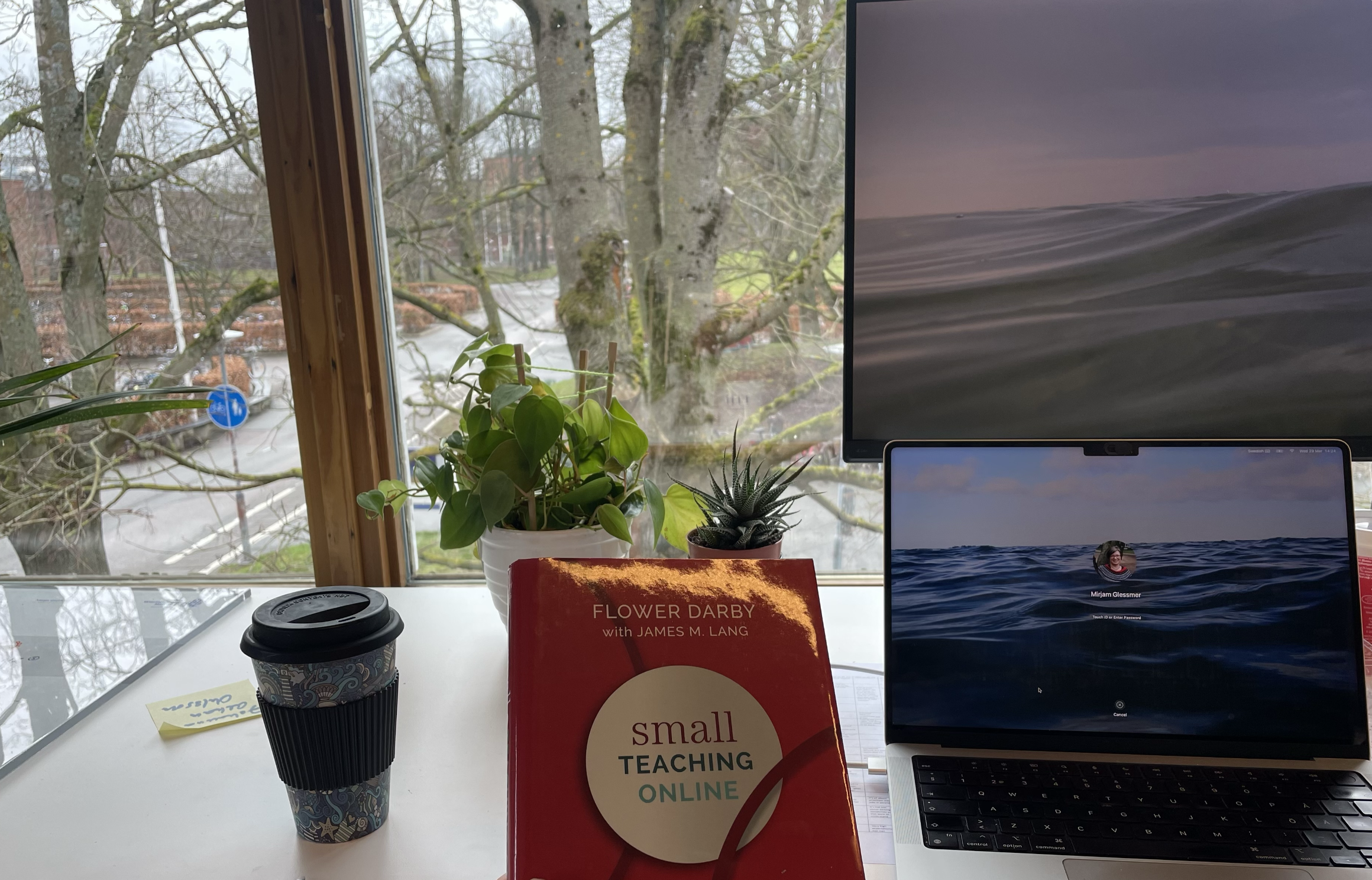
Currently reading Darby & Lang (2019) “Small teaching online — applying learning science in online classes”. My summary (2/x)
This is the second part (part 1 here) of my notes on reading “small teaching online — applying learning science in online classes” by Darby & Lang (2019). Take it with a pinch of salt and go read the original book! These are just my two cents on the points that I find especially relevant for myself!
Part 1, chapter 2, is on “guiding learning through engagement”, basically how to scaffold learning by designing lots of small signposts and feedback opportunities throughout the duration of a course or project. And this is how they suggest we do it:
“Break down complex tasks” by “set[ting] up an incremental sequence of tasks and deadlines designed to pace out the work and help students know they were doing the right thing”. This could be done through checklists, for example, or through structuring writing assignments by suggesting a title, suggesting an outline, suggesting relevant literature, … (and providing feedback opportunities, from you or by peers, so there are ample opportunities for course corrections if necessary).
“Release content strategically”, for example only after students have fulfilled conditions like having submitted an asignment or having passed a quiz. But of course there is a fine line between using this for retrieval practice or to ensure students have the required the necessary prior knowledge and skills, and by having students “jump through hoops” unnecessarily. And one big questionmark in my head is exactly how to do this so it doesn’t end up in micromanaging or unnecessary stress that leads to students taking shortcuts in either fulfilling the condition or getting materials through other avenues to be able to keep up. My impression is that students are very strategically about what they spend time and energy on, and also very well organized. So how do we make sure they actually see the value in following the structure we want?
“Scour class interactions for clues”. While during in-person classes it might be easy-ish to read faces and reactions and adapt teaching accordingly, this might be more difficult in online teaching*. Check-in methods that work well for me are for example always having the “continue-start-stop” and “what did you want to say but didn’t get the chance to?” questions open for anonymous feedback in the background (although, to be honest, I only check those when synchronous teaching is over for the day and I have more brain capacity for whatever might show up there), or to ask for quick visual feedback (like thumbs up/down) for decisions I want to make on the spot. Another suggestion in the book is to always have active Q&A forums and to check & respond regularly (and possibly highlight especially relevant responses).
“Provide module discussion highlights”. Interestingly, I just recently heard that an excellent colleague of mine got the complaint from students that after discussing something in small groups, that when they went back to the slides to study for the exams, they did not find a summary and answer in the slides. Which I find as weird as this advice. Yes, discussion threads are sometimes a pain. But shouldn’t students learn how to deal with it and also learn how to take notes to document the results of discussions? Of course, we can highlight especially important points, but I don’t agree with the advice that the teachers should provide the summaries (not even if they are copying snippets of student work into a document and share that one). Why can’t that be a task that students take on? I have very positive experiences with students taking turns writing summaries of course sessions, which I then gave feedback on and they could edit before they were shared with everybody (and why not let students choose the perspective they want to write it from, to make it more engaging?). Of course it is very context-dependent whether students can be asked to do this or not. But if the discussion forums are such a mess that students can’t do this themselves, then that surely is a bigger problem that needs to be addressed?
And thus endeth part 1, chapter 2. See you soon for the next part!
*One experience I had where this went totally wrong is when I was teaching a course online and this one participant sat just staring without any decernible reactions to what I was doing (not even when I was asking for hand signs) and I was getting more and more annoyed by that, wondering what I might have done to annoy him, if my course was not engaging enough, if he had been forced to attend. Until, when I sent participants into breakout groups, he stayed behind and asked me to excuse him for the rest of the course, because his house had just burned down a couple of days ago and he was really not in a headspace to engage in the course. Wow, that was such a transformative experience for me and the assumptions I make about why people are engaging or not! And this is totally not limited to online teaching (even though it might be easier to have a quick check-in with participants 1-on-1 in in-person teaching, so I might have solved this earlier. But who knows?)